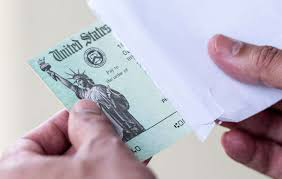Census officials say that direct economic stimulus checks and extended unemployment benefits from the federal government kept million of Americans from falling into poverty during the height of the coronavirus pandemic in 2020.
WASHINGTON, D.C. – Since the 1960s, when then-President Lyndon B. Johnson announced his “War on Poverty” program, federal officials have been striving to reduce U.S. poverty levels.
While observing National Poverty in America Awareness Month, officials of the U.S. Census Bureau admit that differing branches of the federal government can’t even agree on how many Americans are living in poverty nowadays.
Under the provisions of the government’s official poverty measure, there were 37.3 million Americans living in poverty in 2020.
But Census officials believe the updated metrics of their Supplemental Poverty Measure (SPM) are more accurate than traditional poverty estimates that have been in use since the mid-1960s. The SPM in 2020 reported only 29.8 million Americans were impoverished that year, according to economist Kalee Burns in the Census’ Poverty Statistics Branch here.
The government’s Official Poverty Measure (OPM) compares an individual’s or family’s pretax income to a set of thresholds that vary according to family size and the ages of family members, Burns explains.
These OPM calculations do not consider the value of in-kind federal or state benefits such as nutritional assistance, housing supplements or energy programs.
The OPM also does not take into account tax credits like the federal earned income tax credit or direct stimulus payments, like those delivered in 2020 due to the coronavirus pandemic.
The OPM also does not consider regional variations in the costs of living and housing expenses.
On the other hand, Burns notes, the more accurate SPM survey does consider family resources and expenses not included in the official measure as well as geographic expense variations.
In layman’s terms, the SPM adds non-cash benefits from the government that help families meet basic needs, including housing subsidies, SNAP (formerly know as Food Stamps), energy assistance, the National School Lunch Program and WIC (Special Supplemental Nutrition Program for Women, Infants and Children).
The SPM metrics also subtracts necessary expenses like taxes, health care, commuting costs for workers and child-care expenses for working parents.
Census officials say that the national SPM rate in 2020 was 9.1 percent, meaning that about 30 million Americans were living in poverty. Here in Utah, the SPM rate was similar, indicating that about 277,000 Utahns were struggling economically.
The 2020 SPM rate, the lowest since this alternative set of metrics was introduced in 2009, was also the first time that the national SPM rate was lower than the OPM rate. Liana E. Fox, the chief of the Census’ Poverty Statistics Branch, attributes that drop in SPM rates to the economic impact of two rounds of stimulus payments under the Caronavirus Aid, Relief and Economic Security (CARES) and American Rescue Plan (ARPA) acts that were delivered in 2020.
Without those stimulus checks, Fox says the SPM rate in 2020 would have been 12.7 percent, translating to nearly 42 million Americans and more than 415,000 Utahns living in poverty.
Census officials add that, according to SPM metrics, those relief payments moved 11.7 million Americans from poverty and extended unemployment insurance benefits kept another 5.5 million people from falling into poverty during the height of the pandemic.

